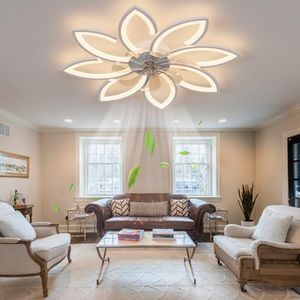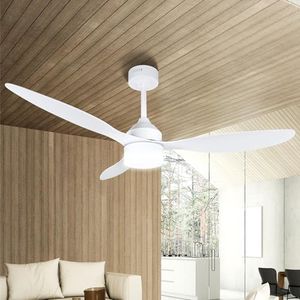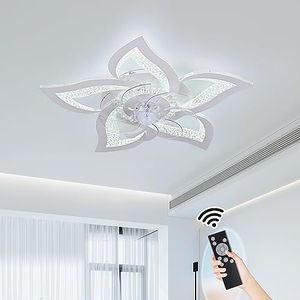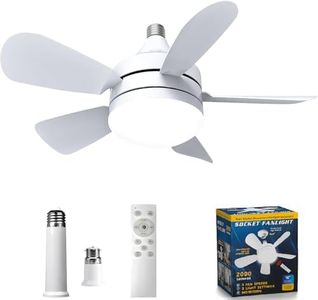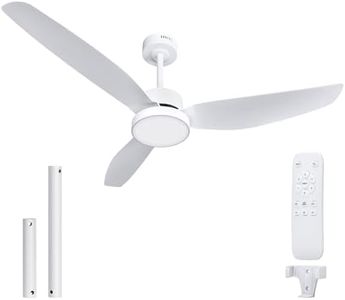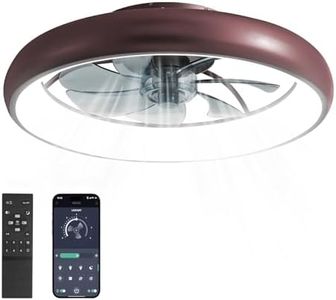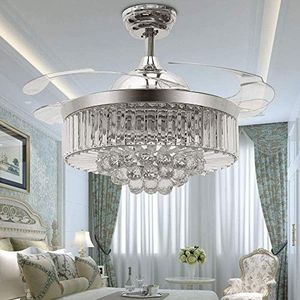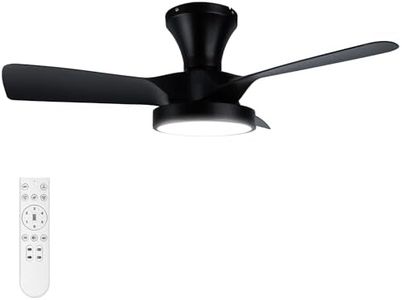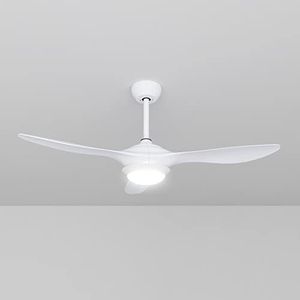We Use CookiesWe use cookies to enhance the security, performance,
functionality and for analytical and promotional activities. By continuing to browse this site you
are agreeing to our privacy policy
10 Best Bright Light Ceiling Fan
From leading brands and best sellers available on the web.Buying Guide for the Best Bright Light Ceiling Fan
When choosing a bright-light ceiling fan, you want to make sure you're balancing airflow, good lighting, and aesthetics for your room. A ceiling fan with a bright integrated light can help illuminate your space while keeping it cool, making it especially useful for rooms that lack natural light or need a combination fixture. You'll want to think about the size of your room, where the fan will be installed, how much light you need, and your preferences for controls and style.Light Output (Lumens)Light output is measured in lumens and shows how bright the fan's light will be. This is important because some fans come with integrated lights that are quite dim and only useful as accents, while others deliver enough brightness to light up a whole room. Generally, the higher the lumens, the brighter the light. For a small bedroom, 800–1,200 lumens might be just right, but for larger living rooms or spaces with little natural light, you might need 1,500 lumens or more. Match the light output to your space: if you need the fan to be your main light source, lean toward higher lumens. If it's just for mood or added lighting, a lower value is fine.
Fan Size (Blade Span)Blade span, measured in inches, tells you how wide the fan is from one blade tip to the other. This matters since a fan that's too small for a room won't circulate enough air, while an oversized fan can overwhelm a small space. For rooms up to about 75 square feet (like small bedrooms), a 36-inch fan is often enough. Medium rooms (up to 225 square feet) do well with 42 to 48 inches, and large rooms may require fans 52 inches and up. Think about the size of your space and ceiling height to choose the right blade span for effective airflow.
Light Type (LED, CFL, Incandescent)Ceiling fans often use different types of bulbs, including LED, CFL, or incandescent. LEDs are the most popular now because they're energy-efficient, last a long time, and are available in various brightness levels and color temperatures. CFLs are less common and not as efficient as LEDs but better than incandescent bulbs. Incandescent bulbs are the least efficient and not as long-lasting. For most people, choosing an LED-lit ceiling fan makes sense, especially if you use the light frequently or want to save on electricity and reduce how often you change bulbs.
Dimming CapabilitySome ceiling fan lights can be dimmed, letting you adjust the brightness to suit your mood or tasks. If you want flexibility—maybe bright for reading and dim for relaxing—look for fans with dimmable lights. This usually requires compatible bulbs and switches or a remote. If you always want the brightest light, dimming isn't necessary, but for multi-purpose rooms or bedrooms, it can be a handy feature.
Control Type (Remote, Wall Switch, Pull Chain)How you control your fan and light is a big part of ease of use. Some fans use basic pull chains, others offer wall-mounted switches, and many now come with remotes or even smart controls. If your fan is in a spot that's hard to reach, a remote or smart control can be very convenient. If you prefer simplicity or the fan is always accessible, a pull chain or wall switch may be fine. Consider your daily habits and accessibility when choosing.
Mounting Options and Ceiling HeightCeiling fans can be mounted close to the ceiling, with a downrod, or even on angled (sloped) ceilings. The right mounting method ensures the fan is at the proper height—ideally, blades should be about 7–9 feet above the floor for both safety and performance. If you have low ceilings, choose a 'hugger' or flush-mount style. For high or sloped ceilings, look for fans with downrod and angle-mount compatibility. This will help maximize both airflow and lighting in your space.
Color TemperatureColor temperature, measured in Kelvins (K), describes whether the light is warm (yellowish) or cool (bluish). Warm white (2,700–3,000K) is cozy and inviting—great for bedrooms or living areas. Neutral white (3,500–4,000K) is balanced and works well in kitchens or workspaces. Cool white (5,000K and above) is very bright and crisp, suited for task-intensive areas or anyone who prefers a daylight feel. Pick a color temperature that matches the mood and practicality of your space.

